Like so many nice things, “wassail” the drink and “wassailing” the verb come to us from the British. The tradition of wassailing dates back to pagan times, when merrymakers would visit orchards on the twelfth night of Christmas, banging pots and pans to scare off bad spirits and awaken the trees. While they were at it, they sang and danced to cheer the good spirits of the trees and encourage them to be fruitful for the upcoming season. Orchard owners would reward the assembled with a communal cup of a warm spiced drink, sometimes topped with apples roasted to the point of bursting (and called lamb’s wool for reasons one can only imagine). In the modern era, drinking cider wassail requires less planning and is orchard-optional, but it is no less festive.
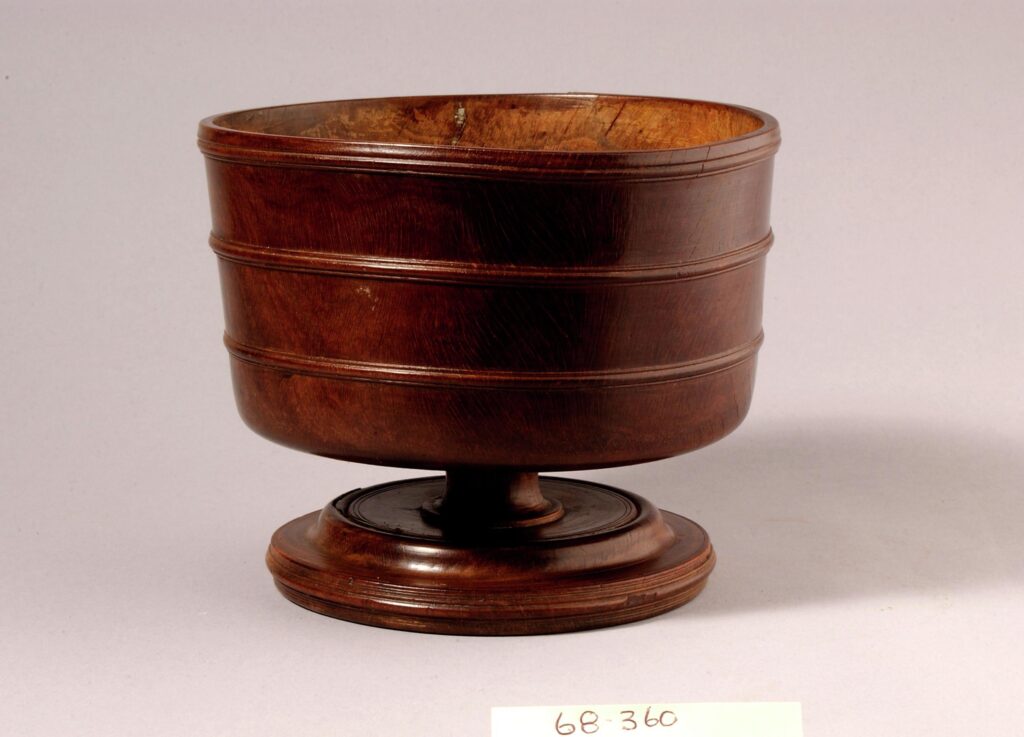
If banging pans in an orchard is not your vibe, you can still enjoy wassailing by sharing a big pot of cider wassail with family and friends. The word “wassail” comes from an Old English word meaning either “be in good health” or “be fortunate.” Forgoing the traditional passing of the group bowl, but sharing the spice-laden goodness by clinking cups and toasting each other can be yet another merry winter celebration element imported from England, like Christmas crackers filled with paper crowns, fortunes and prizes.
We didn’t go to England to find a modern vintage recipe for cider wassail, although we did reach back to the agricultural roots of wassailing by presenting a recipe from an orchard. This recipe comes from Tougas Fruit Farm in Northborough, MA and dates from sometime in the 1980s, most likely. (The leaflet is undated, but it predates WYZWYG word processing and using the area code to make local calls.)
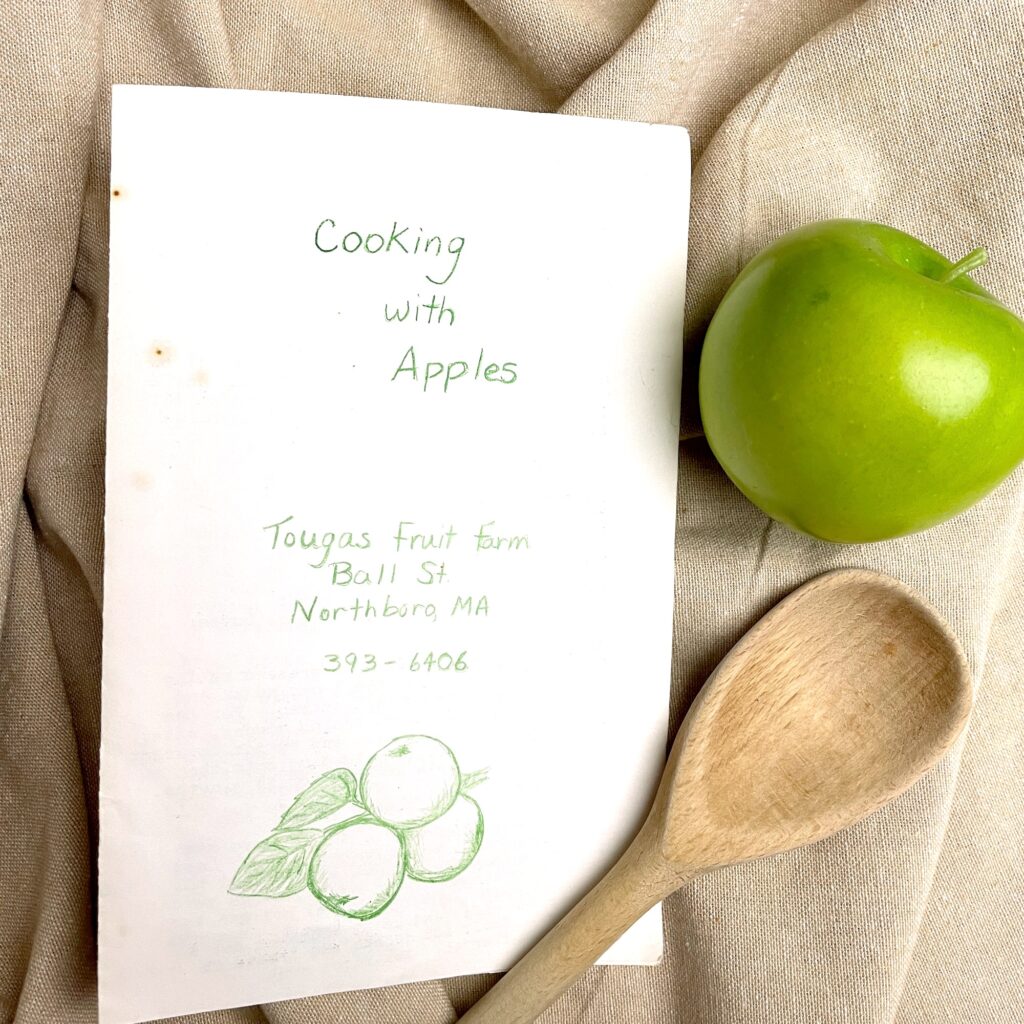
There are a million wassail recipes out there. Some call for lemons and pineapple juice and other things that would not have been in common supply during the Middle Ages of England. Our particular favorite has Orange Tang and Lemon Kool-Aid as a base. This recipe is very traditional, right up to the part where you put whipped cream on the top. You read that right, whipped cream. The recipe specifically states “the whipped cream makes a big difference in taste, so don’t omit it.” Who are we to argue?
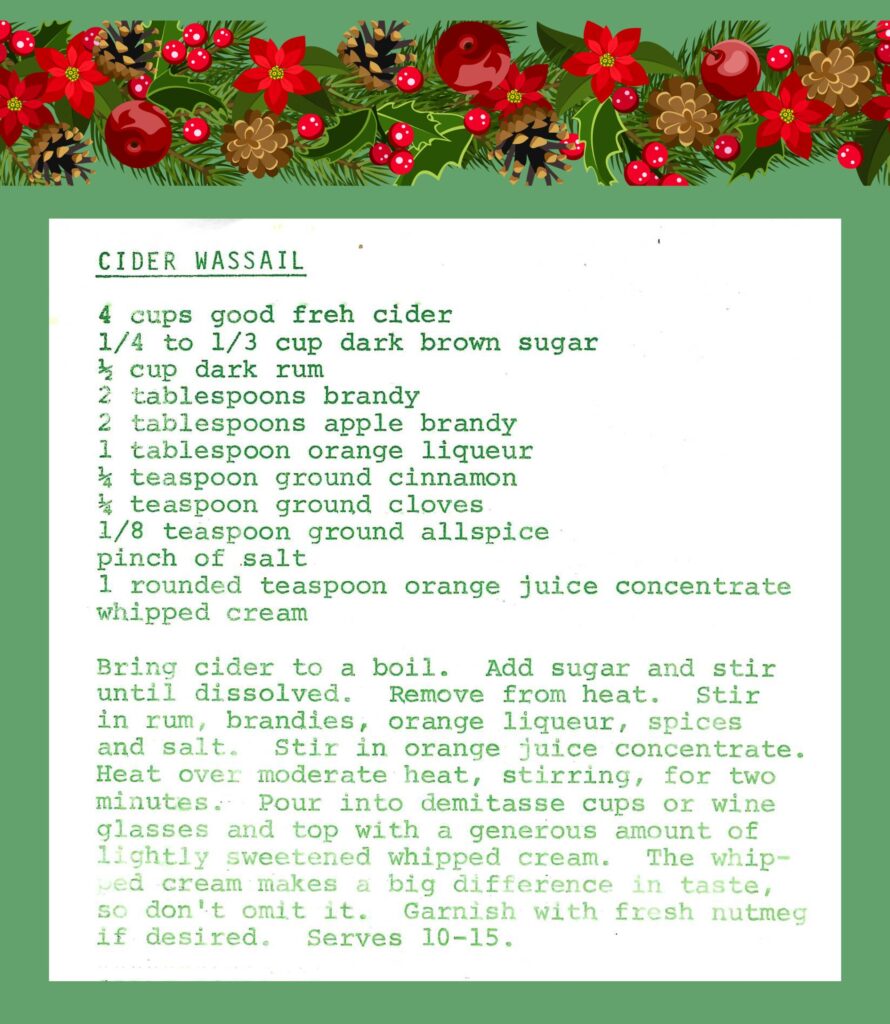
By the way: Looking into the history of wassailing gave some interesting context to the enduring and seemingly endless carol The Twelve Days of Christmas, as well as to Shakespeare’s Twelfth Night. The advent season, from December 1-24, required fasting. A time of feasting and general carousing started on Christmas and lasted twelve days until January 5. So, all the bounty received from Mr. or Ms. True Love was gifted daily starting on Christmas, not in the days leading up to Christmas. Also, it should be noted that Twelfth Night has nothing to do with orchards and everything to do with mistaken identity, love triangles and, because it’s Shakespeare, disguises. The tie to wassailing is in the revelry at the end, again because it’s Shakespeare.
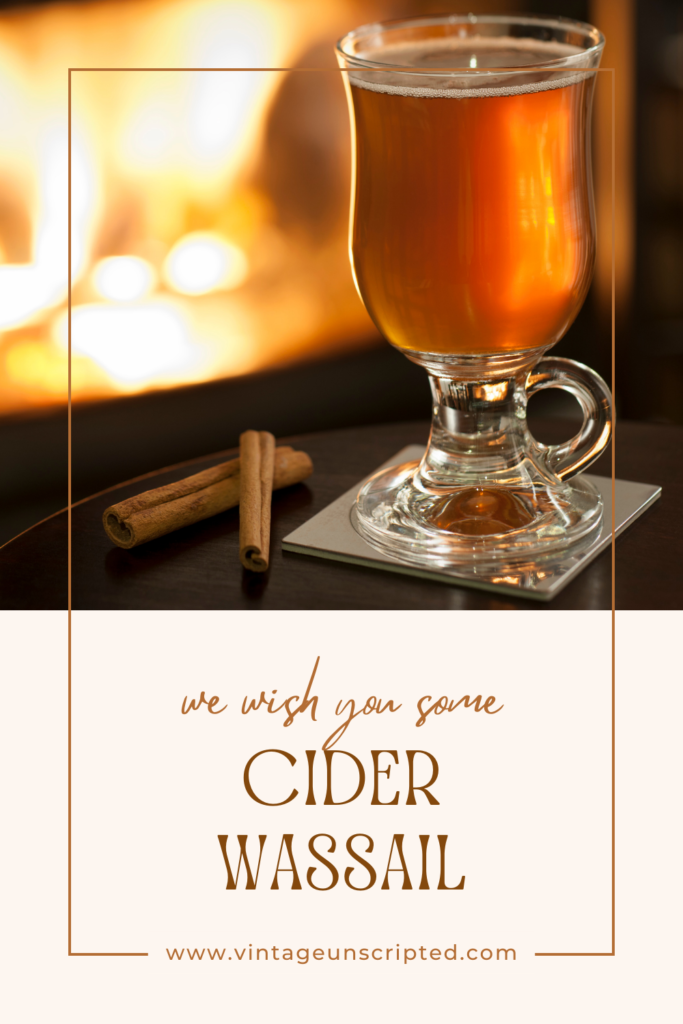

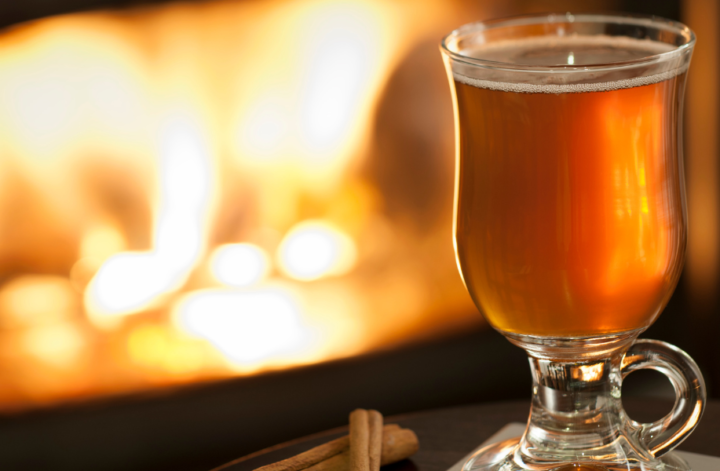

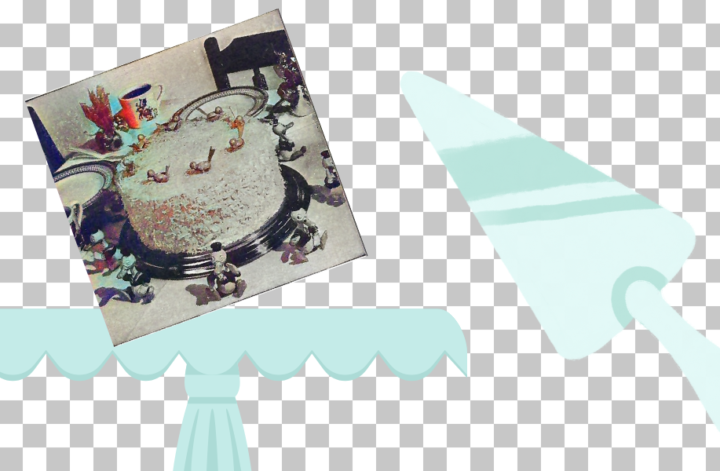
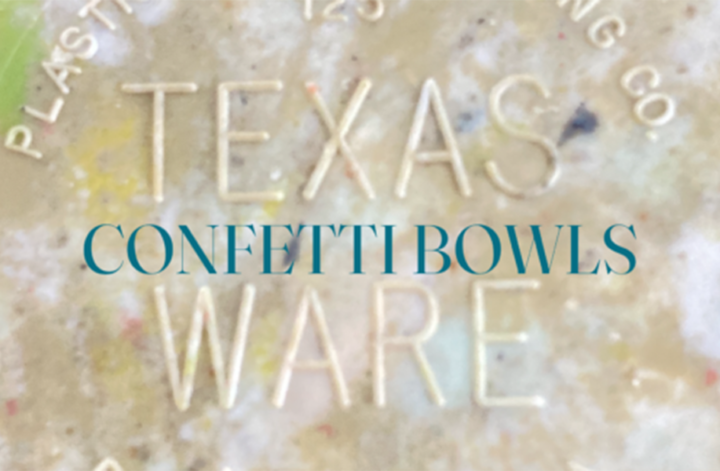

1 comment
Way back in the 80s, before kids, I remember going to a wassailing at Nashoba Winery, which was pretty new and very small. It was exactly as you described, banging pots and pans. They also threw wine at the base of the tree. It was so fun! Wish they still did it!